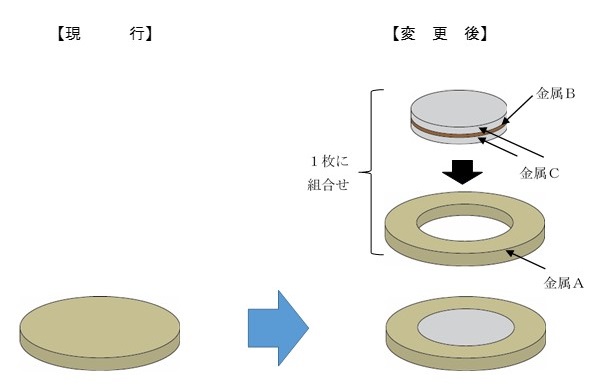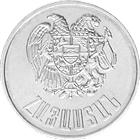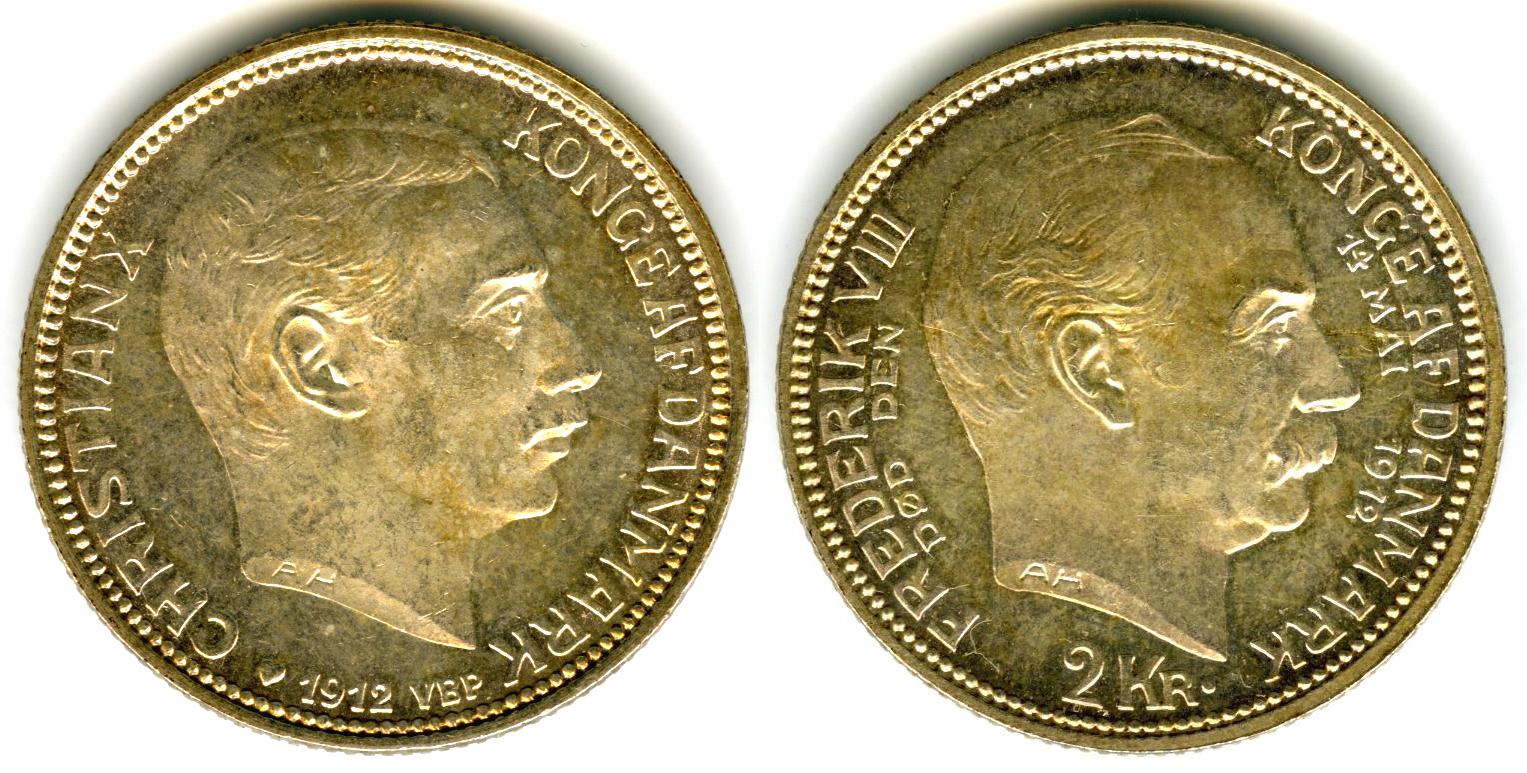|
List Of Bi-metallic Coins By Release Date
This list includes discontinued and commemorative bi-metallic coins minted since 1982. * Abkhazia — 1 Aspar in 2022 * Albania — 100 Leke in 2000 * Alderney — 50 Pounds in 2002 * Algeria — 10, 20, and 50 Dinar in 1992 * Andaman and Nicobar — 10 and 20 Rupees as part of a Limited-Edition Release in 2011 * Andorra — 2 Diners in 1985 * Angola — 5 and 10 Kwanzas in 2012 and the 20 Kwanzas in 2014 * Argentina — 1 Peso coin in 1994 * Armenia — 500 Dram in 2003 * Australia — commemorative 5, 10, 20, 25, 50, 75, and 100 Dollar coins, the 5 Dollar being the first in 1994 * Azerbaijan — 50 Qəpik in 1992 * Bahrain — 100 fil coin in 1992 and the 500 Fils in 2000 * Belarus — 2 Roubles in 2009 and the Commemorative 20 Roubles in 2016 * Benin — commemorative 500 Francs in 2022 * Bhutan — 2000 Ngultrums in 2002 * Bolivia — 5 Boliviar in 2001 and the 1000 Boliviar in 2005 * Bosnia and Herzegovina — Convertible Mark in 2000 * Botswana — 5 Pula in 20 ... [...More Info...] [...Related Items...] OR: [Wikipedia] [Google] [Baidu] |
Bi-metallic Coins
Bi-metallic coins are coins consisting of two ('' bi-'') metals or alloys, generally arranged with an outer ring around a contrasting center. Common circulating examples include the €1, €2, United Kingdom £1 and £2, Canadian $2, South Africa R5, Egyptian £1, Turkish 1 lira and 50 kurus, Indian ₹10 and ₹20, Indonesian Rp1,000, Polish 2 and 5 zł, Czech 50 Kč, Hungarian 100 and 200 Ft, Bulgarian 1 and 2 lv., Hong Kong $10, Argentine $1 and $2, Brazilian R$1, Chilean $100 and $500, Colombian $500 and $1000, Peruvian S/2 and S/5, Albanian 100 Lekë, Thai 10 baht and all Mexican coins of $1 or higher denomination. For a more complete list, see List of bi-metallic coins. History Bi-metallic coins and medals have been issued for a long time. The Roman Empire issued special-occasion, large medallions with a center of bronze or copper and an outer ring of orichalcum, starting with the reign of Hadrian. Meanwhile, circulating bi-metallic coins are know ... [...More Info...] [...Related Items...] OR: [Wikipedia] [Google] [Baidu] |
Armenian Dram
The Armenian dram (; Armenian dram sign, sign: ֏; abbreviation: դր.; ISO 4217, ISO code: AMD) is the currency of Armenia. It was historically subdivided into 100 luma (). The Central Bank of Armenia is responsible for issuance and circulation of dram banknotes and coins, as well as implementing the monetary policy of Armenia. The word ''dram'' means "money" and is cognate with the Greek Modern drachma, drachma and the Arabic dirham, as well as the English weight unit Dram (unit), dram. History The first instance of a "dram" currency was in the period from 1199 to 1375, when silver coins called ''dram'' or ''tram'' were issued. Dram or Takvorin coinage would periodically continue to be produced for some time until the loss of Armenia's independence. The establishment of Russian Armenia saw the adoption of the Imperial ruble, followed by a series of attempts to localize the Russian ruble under the Soviet Union and Commonwealth of Independent States (CIS). On 21 September 199 ... [...More Info...] [...Related Items...] OR: [Wikipedia] [Google] [Baidu] |
Bhutan
Bhutan, officially the Kingdom of Bhutan, is a landlocked country in South Asia, in the Eastern Himalayas between China to the north and northwest and India to the south and southeast. With a population of over 727,145 and a territory of , Bhutan ranks List of countries and dependencies by area, 133rd in land area and List of countries and dependencies by population, 160th in population. Bhutan is a Democracy, democratic constitutional monarchy with a King of Bhutan, King as the head of state and a Prime Minister of Bhutan, prime minister as the head of government. The Je Khenpo is the head of the state religion, Vajrayana Buddhism. The Himalayas, Himalayan mountains in the north rise from the country's lush subtropical plains in the south. In the Mountains of Bhutan, Bhutanese Himalayas, there are peaks higher than above sea level. Gangkhar Puensum is Bhutan's highest peak and is the highest unclimbed mountain in the world. The wildlife of Bhutan is notable for its diversi ... [...More Info...] [...Related Items...] OR: [Wikipedia] [Google] [Baidu] |
West African CFA Franc
The West African CFA franc ( or simply , ISO 4217 code: XOF; abbreviation: F.CFA) is the currency used by eight independent states in West Africa which make up the West African Economic and Monetary Union (UEMOA): Benin, Burkina Faso, Côte d'Ivoire, Guinea-Bissau, Mali, Niger, Senegal and Togo. These eight countries had a combined population of 105.7 million people in 2014, and a combined GDP of US$128.6 billion The initialism CFA stands for (). The currency is issued by the Central Bank of West African States (BCEAO; ), located in Dakar, Senegal, for the members of the UEMOA. The franc is nominally subdivided into 100 but no coins or banknotes denominated in centimes have ever been issued. The production of CFA franc notes has been carried out at Chamalières by the Bank of France since its creation in 1945. The Central African CFA franc is of equal value to the West African CFA franc, and is in circulation in several central African states. They are both com ... [...More Info...] [...Related Items...] OR: [Wikipedia] [Google] [Baidu] |
Commemorative Coin
A commemorative coin is a coin issued to commemorate some particular event or issue with a distinct design with reference to the occasion on which they were issued. Some coins of this category serve as collector's items only, while most commemorative coins are for regular circulation. Subcategories Commemorative coins can be seen as being of one of three types: *''Regular issue coinage'' are the normal coins intended to be used in commerce every day and are typically issued with the same design for several years, e.g. euro coins. *''Circulating commemoratives'' are intended to be used for commerce, but the design will only be issued for a limited time to commemorate an event, anniversary, person or location, among other items. Examples include the €2 commemorative coins and U.S. 50 State Quarters. *''Non-circulating legal tender (NCLT)'' are coins which are legal tender, and thus can in theory be used to purchase goods or services, but are not intended to be used in such a ma ... [...More Info...] [...Related Items...] OR: [Wikipedia] [Google] [Baidu] |
Benin
Benin, officially the Republic of Benin, is a country in West Africa. It was formerly known as Dahomey. It is bordered by Togo to the west, Nigeria to the east, Burkina Faso to the north-west, and Niger to the north-east. The majority of its population lives on the southern coastline of the Bight of Benin, part of the Gulf of Guinea in the northernmost tropical portion of the Atlantic Ocean. The capital is Porto-Novo, and the seat of government is in Cotonou, the most populous city and economic capital. Benin covers an area of , and its population in was estimated to be approximately million. It is a tropical country with an economy heavily dependent on agriculture and is an exporter of palm oil and cotton. From the 17th to the 19th century, political entities in the area included the Kingdom of Dahomey, the city-state of Porto-Novo#History, Porto Novo, and other states to the north. This region was referred to as the Slave Coast of West Africa from the early 17th century due ... [...More Info...] [...Related Items...] OR: [Wikipedia] [Google] [Baidu] |
Belarusian Ruble
The ruble, rouble or rubel (; ; Currency symbol, abbreviation: Br, ISO 4217, ISO code: BYN) is the currency of Belarus. It is subdivided into 100 kopecks (, ). The exchange rate of the Belarusian ruble is determined based on a basket of currencies consisting of the Russian ruble (with a weight of 60%), the US dollar (with a weight of 30%) and the renminbi (with a weight of 10%). The Euro was part of said currency basket but was excluded in December 2022 due to a decrease in the volume of trade between Belarus and the European Union. History First ruble (BYB), 1992–2000 As a result of the breakup of the supply chain in the former Soviet Union, Soviet enterprises, goods started to be bought and sold in the Market (economics), market, often requiring Cash, cash settlement. The Belarusian unit of the Gosbank, USSR State Bank had neither the capacity nor the licence to print Soviet banknotes, so the government decided to introduce its own national currency to ease the cash situation ... [...More Info...] [...Related Items...] OR: [Wikipedia] [Google] [Baidu] |
Belarus
Belarus, officially the Republic of Belarus, is a landlocked country in Eastern Europe. It is bordered by Russia to the east and northeast, Ukraine to the south, Poland to the west, and Lithuania and Latvia to the northwest. Belarus spans an area of with a population of . The country has a hemiboreal climate and is administratively divided into Regions of Belarus, six regions. Minsk is the capital and List of cities and largest towns in Belarus, largest city; it is administered separately as a city with special status. For most of the medieval period, the lands of modern-day Belarus was ruled by independent city-states such as the Principality of Polotsk. Around 1300 these lands came fully under the Grand Duchy of Lithuania and subsequently by the Polish–Lithuanian Commonwealth; this period lasted for 500 years until the Partitions of Poland, 1792-1795 partitions of Poland-Lithuania placed Belarus within the Belarusian history in the Russian Empire, Russian Empire for the fi ... [...More Info...] [...Related Items...] OR: [Wikipedia] [Google] [Baidu] |
Fils (currency)
The fils (Arabic: فلس) is a subdivision of currency used in some Arab countries, such as Iraq and Bahrain. The term is a modern retranscription of ''fals'', an early medieval Arab coin. "Fils" is the singular form in Arabic, not plural (as its final consonant might indicate to an English speaker). The plural form of fils is ''fulūs'' (فلوس); the latter term can also refer to small amounts of money or to money in general in Egyptian Arabic, Egyptian and Mesopotamian Arabic, Iraqi and many other varieties of Arabic. * 1 Bahraini dinar = 1000 fulūs (or 1 fils = Bahraini dinar) * 1 Emirati dirham = 100 fulus * 1 Iraqi dinar = 1000 fulūs * 1 Jordanian dinar = 1000 fulūs * 1 Kuwaiti dinar = 1000 fulūs * 1 Yemeni rial = 100 fulūs See also * Falus References {{DEFAULTSORT:Fils (Currency) Denominations (currency) ... [...More Info...] [...Related Items...] OR: [Wikipedia] [Google] [Baidu] |
Bahrain
Bahrain, officially the Kingdom of Bahrain, is an island country in West Asia. Situated on the Persian Gulf, it comprises a small archipelago of 50 natural islands and an additional 33 artificial islands, centered on Bahrain Island, which makes up around 83 percent of the country's landmass. Bahrain is situated between Qatar and the northeastern coast of Saudi Arabia, to which it is connected by the King Fahd Causeway. The population of Bahrain is 1,501,635 as of 14 May 2023, of whom 712,362 (47.44%) are Bahraini nationals and 789,273 are expatriates spanning 2,000 ethnicities (52.56% of the country's population of 1,501,635). Bahrain spans some , and is the List of countries and dependencies by area, third-smallest nation in Asia after the Maldives and Singapore. The capital and largest city is Manama. According to archeologist Geoffrey Bibby, Bahrain is the site of the ancient Dilmun civilization. though locally the islands were controlled by the Shia Jarwanids, Jarwanid dyn ... [...More Info...] [...Related Items...] OR: [Wikipedia] [Google] [Baidu] |
Gapik
The gapik (, ) is a monetary unit of Azerbaijan, equal to of the Azerbaijani manat. The Redenomination of Azerbaijani manat, 2006 redenomination of the manat introduced coins of 1, 3, 5, 10, 20, and 50 gapiks into Circulation (currency), circulation. The 1, 3 and 5 gapik are made of copper-covered steel. The 10 and 20 gapik are of brass-covered steel, and the 50 gapik is bi-metallic coin, bimetallic. The word ''gapik'' (''qəpik'') is derived from the Russian word ''kopeck'' (, "spear"), which was a Russian coin since the time of Ivan the Terrible in the 16th century, and is now the monetary subunit of the Russian ruble, Ukrainian hryvnia, Belarusian ruble and the Transnistrian ruble. Notes External links {{Commonscat, Coins of Azerbaijan, Gapik Coins of Azerbaijan Currencies of Azerbaijan Currencies introduced in 1919 Currencies introduced in 1992 ... [...More Info...] [...Related Items...] OR: [Wikipedia] [Google] [Baidu] |
Azerbaijan
Azerbaijan, officially the Republic of Azerbaijan, is a Boundaries between the continents, transcontinental and landlocked country at the boundary of West Asia and Eastern Europe. It is a part of the South Caucasus region and is bounded by the Caspian Sea to the east, Russia's republic of Dagestan to the north, Georgia (country), Georgia to the northwest, Armenia and Turkey to the west, and Iran to the south. Baku is the capital and largest city. The territory of what is now Azerbaijan was ruled first by Caucasian Albania and later by various Persian empires. Until the 19th century, it remained part of Qajar Iran, but the Russo-Persian wars of Russo-Persian War (1804–1813), 1804–1813 and Russo-Persian War (1826–1828), 1826–1828 forced the Qajar Empire to cede its Caucasian territories to the Russian Empire; the treaties of Treaty of Gulistan, Gulistan in 1813 and Treaty of Turkmenchay, Turkmenchay in 1828 defined the border between Russia and Iran. The region north o ... [...More Info...] [...Related Items...] OR: [Wikipedia] [Google] [Baidu] |






